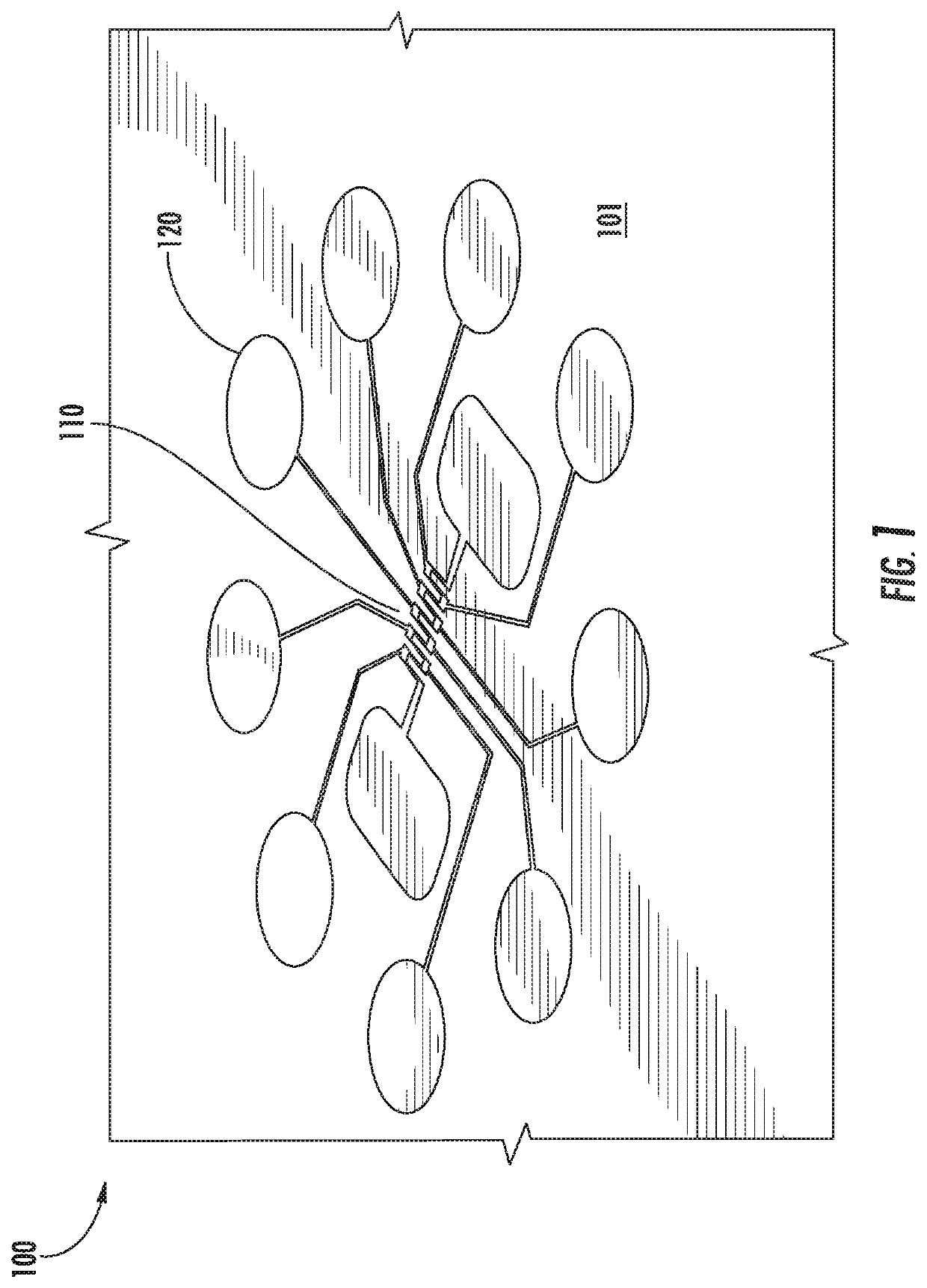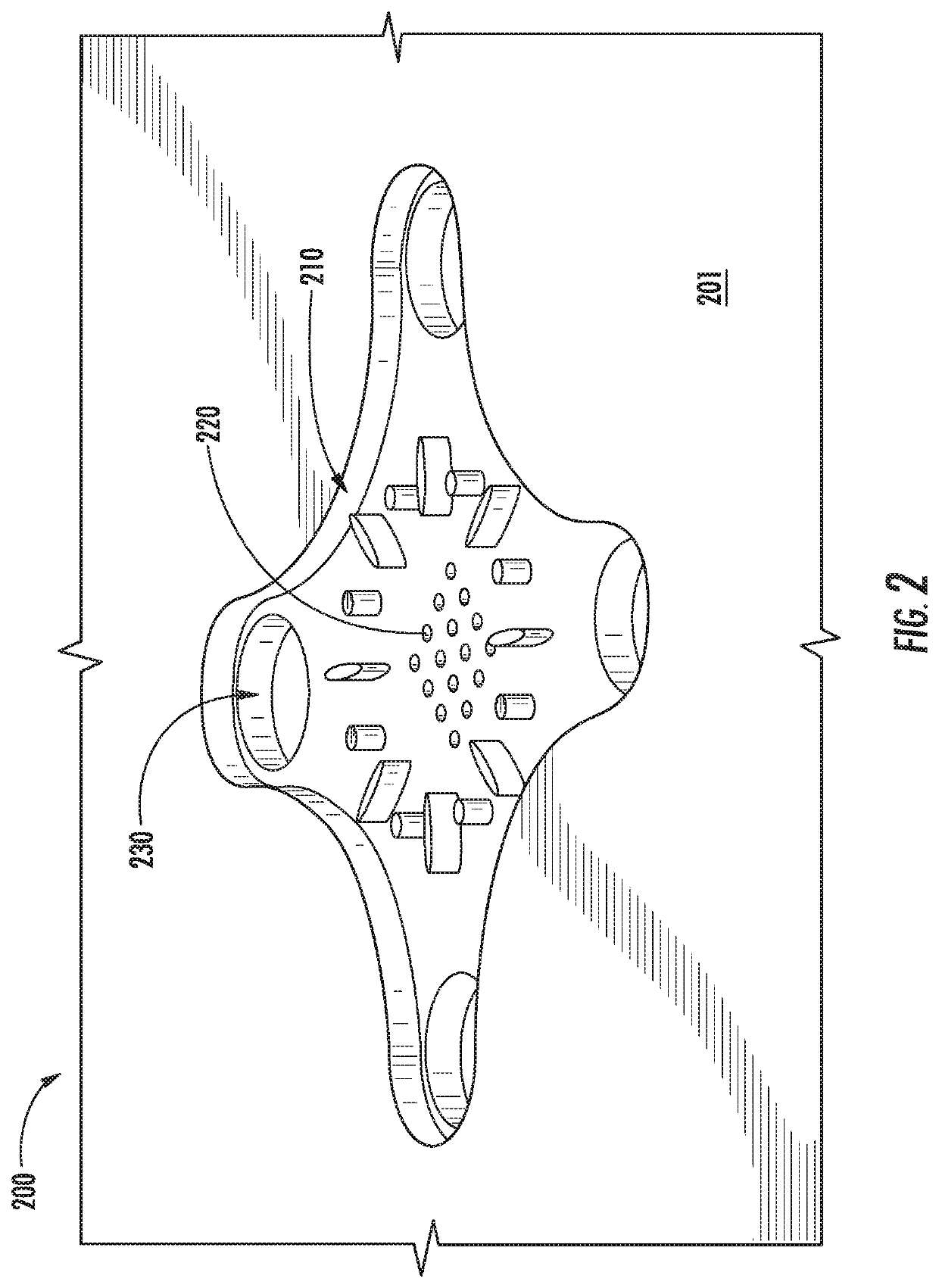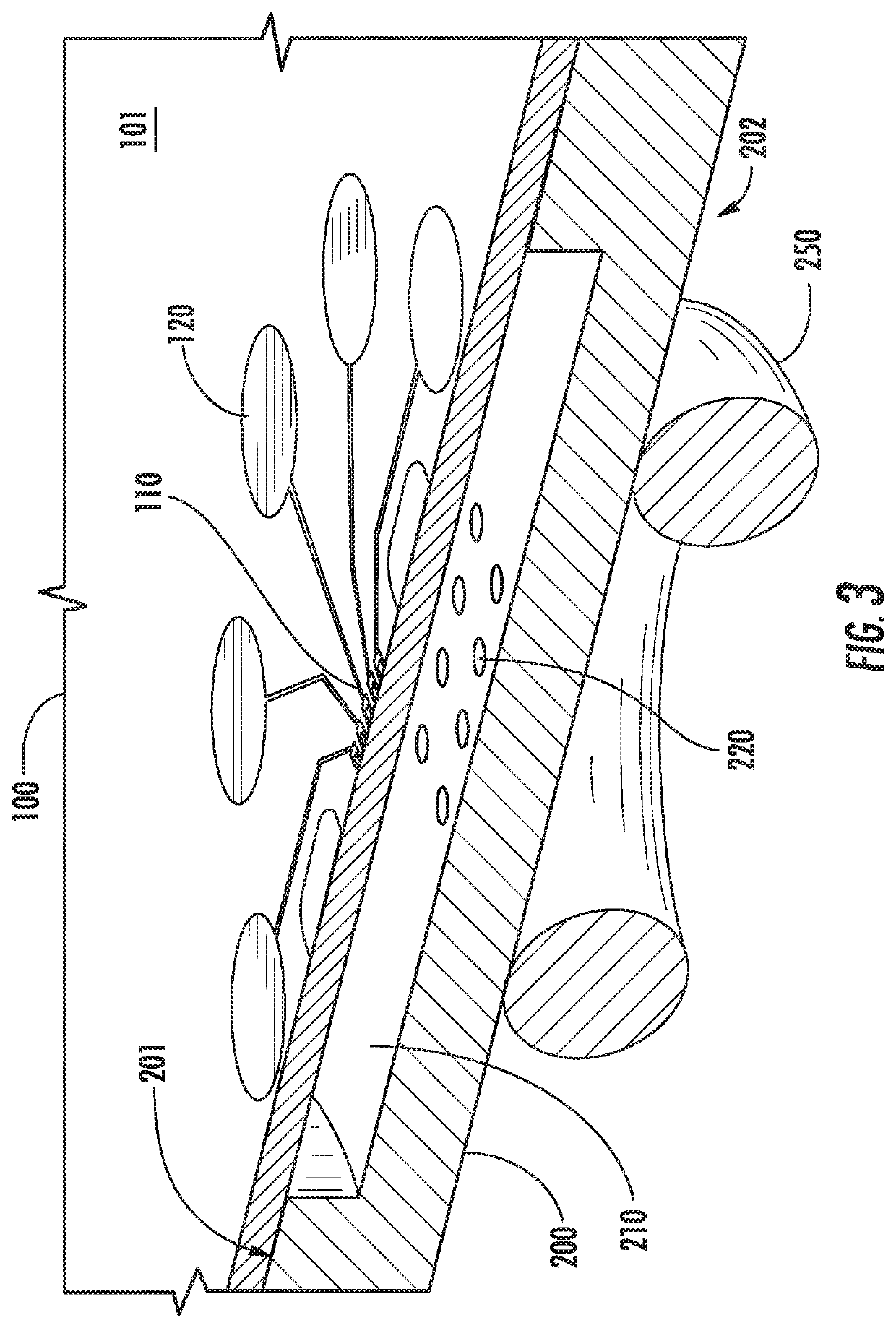Thermal management of RF devices using embedded microjet arrays
a technology of micro-jet arrays and thermal management, which is applied in the direction of indirect heat exchangers, laminated elements, lighting and heating apparatus, etc., can solve the problems of limited heat transfer from the maximum component temperature of the application of the heat generating device, and the significant amount of heat generated, etc., to achieve the effect of increasing single-phase heat transfer, improving heat transfer properties, and increasing contact area
- Summary
- Abstract
- Description
- Claims
- Application Information
AI Technical Summary
Benefits of technology
Problems solved by technology
Method used
Image
Examples
Embodiment Construction
[0031]Microjet impingement is a heat transfer technique by which a jet or an array of jets impinge onto a surface for the purpose of transferring heat between the surface and the fluid of the jet. Jets can be formed by the use of nozzles, tubes or an orifice plate and are characterized by having a substantially higher momentum in one direction than the surrounding fluid. Typically, a turbulent jet exit velocity profile is flat across the radius, reducing to zero at the edge due to the presence of the nozzle. This high velocity jet suppresses the thermal boundary layer at the heat transfer surface resulting in high heat transfer coefficients.
[0032]Adjacent fluid, particularly if it is the same fluid, is entrained into the core of the jet, spreading the momentum of the jet out to a larger and larger radius as the jet propagates downstream. At the point where the centerline of the jet meets the impingement surface, a stagnation point exists due to symmetry. Near this point, the flow tu...
PUM
 Login to View More
Login to View More Abstract
Description
Claims
Application Information
 Login to View More
Login to View More - R&D
- Intellectual Property
- Life Sciences
- Materials
- Tech Scout
- Unparalleled Data Quality
- Higher Quality Content
- 60% Fewer Hallucinations
Browse by: Latest US Patents, China's latest patents, Technical Efficacy Thesaurus, Application Domain, Technology Topic, Popular Technical Reports.
© 2025 PatSnap. All rights reserved.Legal|Privacy policy|Modern Slavery Act Transparency Statement|Sitemap|About US| Contact US: help@patsnap.com



